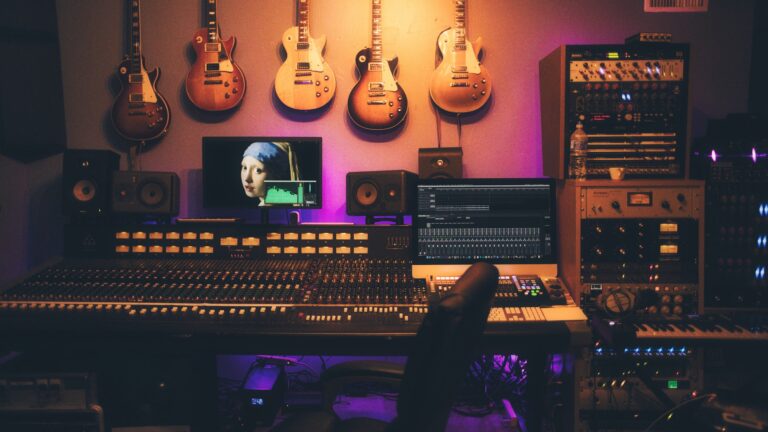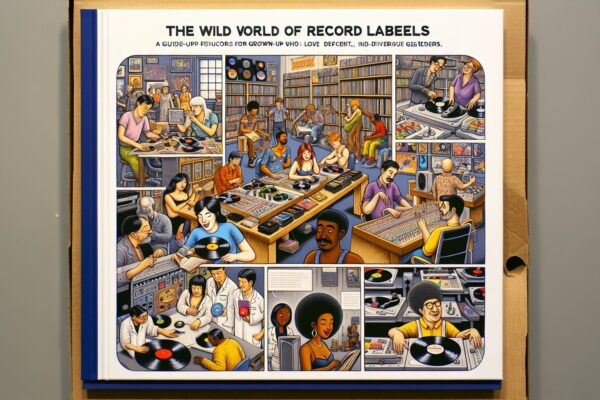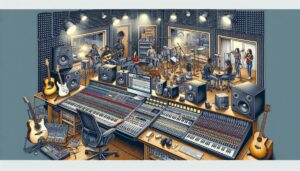Music is a universal language that has the power to evoke emotions, connect people, and inspire creativity. Whether you’re a seasoned musician or just starting your musical journey, understanding the art of music production is crucial to taking your musical creations to new heights. In this article, we’ll dive into the world of music production, explore different musical instruments, and discover the wonders of digital beats.
The Beauty of Musical Instruments
Before the digital age, music production revolved around traditional musical instruments. From guitars and pianos to violins and drums, there’s a vast array of instruments that add depth and texture to any composition.
-
Guitars: With their versatile range and melodic capabilities, guitars have been a staple in various genres of music. From the rhythmic strumming of acoustic guitars to the shredding solos on electric guitars, their beautiful sound has the ability to captivate listeners.
-
Pianos: The timeless elegance and expressive nature of pianos make them a favorite among musicians. The diversity of piano styles, including grand, upright, and digital keyboards, provide different tones and versatility for any musical production.
-
Violins: With its unique ability to mimic the human voice, the violin adds a touch of sophistication to any composition. From classical symphonies to emotional ballads, the violin’s distinct sound can evoke a wide range of emotions.
-
Drums: If you’re looking to add rhythm and energy to your music, drums are a must-have. Whether it’s the thunderous beats of a bass drum or the intricate patterns of a snare, drums form the backbone of many musical genres and drive the groove of a composition.
Enter the Digital Age: The Rise of Electronic Music
As technology advanced, so did the world of music production. Electronic music emerged as a genre of its own, blending traditional instruments with synthesized sounds, and revolutionizing the way music was made. The introduction of electronic instruments, sequencers, and drum machines brought a new level of creativity and possibilities to musicians and producers.
-
Electronic Instruments: Synthesizers and keyboards paved the way for endless sonic experimentation. With their ability to create unique sounds and manipulate tones, electronic instruments have become indispensable in music production. From thick basslines to ethereal pads, the possibilities are endless.
-
Sequencers: In the realm of electronic music, sequencers play a crucial role. These devices allow musicians to create intricate patterns and melodies by programming note sequences. Sequencers provide a level of precision and control that is difficult to achieve through traditional means.
-
Drum Machines: Drum machines revolutionized the production of beats and rhythms. By replicating the sound of traditional drums, drum machines allowed musicians to create complex, layered drum patterns with ease. The ability to program beats gave birth to genres like hip-hop, where the rhythm is the backbone of the composition.
Unleashing Creativity with DAWs
Digital Audio Workstations (DAWs) have emerged as the go-to tool for modern music production. These software packages provide a comprehensive suite of tools and effects that enable musicians and producers to create, record, edit, and mix their compositions all in one platform. Whether you’re producing electronic music or recording a live band, DAWs offer a limitless playground for sonic exploration.
-
Creative Arrangement: DAWs allow you to arrange and organize your musical ideas effortlessly. With the ability to drag and drop, copy and paste, and manipulate audio and MIDI tracks, the possibilities for experimentation and creativity are truly endless.
-
Advanced Effects: DAWs come equipped with a wide range of audio effects, from reverb and delay to compression and EQ. These effects allow you to shape your sound, add depth, and polish your mix to perfection.
-
Virtual Instruments: One of the greatest advantages of DAWs is the availability of virtual instruments. These software counterparts of traditional instruments offer an extensive library of sounds that can be played and edited directly within the DAW. This brings the power of an entire orchestra or vast soundscapes right to your fingertips.
Hip Hop Instrumentals and Beat Making
In recent years, hip hop instrumentals and beat making have gained significant popularity, thanks to their catchy rhythms and infectious grooves. Beat making involves creating the foundation of a song by programming drum patterns, basslines, and other elements using various instruments and sampled sounds. With the advancements in technology, aspiring producers can now create professional-sounding beats from the comfort of their own homes.
While beat making traditionally involved physical drum machines and samplers, modern producers often rely on software options within their chosen DAW. With a plethora of virtual instruments and sample libraries, producers can easily craft unique beats that merge the old-school roots of hip hop with modern influences.
Conclusion
Music production is an art form that continuously evolves. Whether you’re drawn to the time-honored sounds of traditional instruments or the limitless possibilities of digital beats, understanding the tools and techniques of music production is vital to expressing your creativity. From guitars and pianos to electronic instruments, sequencers, drum machines, and DAWs, each component plays a crucial role in crafting the perfect composition. So, let the music guide you on this incredible journey of self-expression, and who knows, you may just be the next musical genius to revolutionize the world with your sonic creations.



